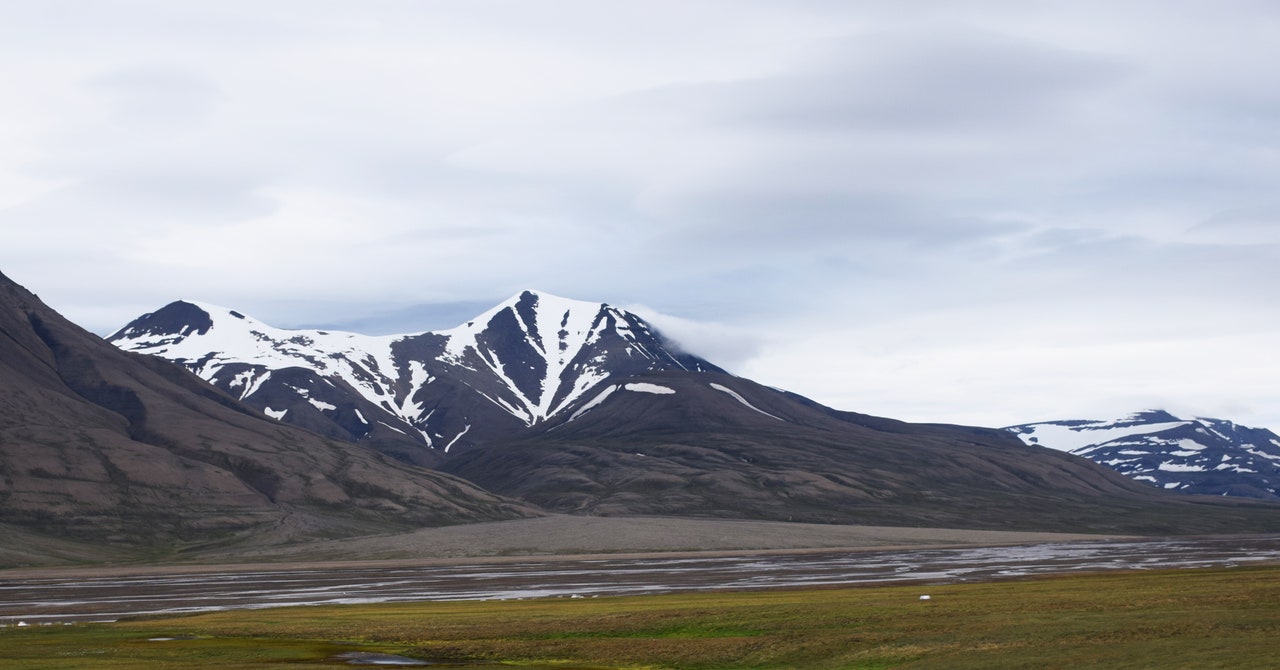
All of this creates a contradiction that scientists are only beginning to investigate: As the Arctic warms, more peat dries out and ignites, but more vegetation grows, which could eventually form new peat. “People think that there are no new peatlands initiating at the moment, but our data is—very tentatively, at least—showing that this is not the case,” says Väliranta.
The key variable, of course, is water: Will Svalbard and the rest of the Arctic stay wet enough, for long enough, to allow peat to develop? Peat is extraordinarily sensitive in that it can take centuries to form, yet it can vanish in an instant if it catches fire. “If these climate conditions and extreme weather conditions lead to surface drying, then they are prone to fires,” says Väliranta. “And then, of course, if the peatland burns, then all that carbon returns to the atmosphere.”
A more surprising variable is wildlife. In Svalbard, flocks of birds and herds of reindeer roam around, fertilizing the vegetation with their droppings, which encourages the growth of plants. As the Arctic continues to green, will more animal species also wander north, providing a critical source of fertilizer? Or, if reindeer populations grow big enough, will they eat so much vegetation that they actually discourage the formation of peat? Väliranta and other scientists can’t yet say.
They’re also not sure how much any new peatlands might offset those lost to wildfires. “Peat has the capacity to lock up carbon for a long time,” writes University of Zurich ecologist Jakob Assmann in an email to WIRED. (He studies Arctic greening but wasn’t involved in this new research.) “New peat formation in the Arctic could therefore potentially lead to long-term removal of carbon from the atmosphere. To my knowledge, it is currently very uncertain how much carbon could be removed from the atmosphere in this way and whether it would provide negative feedback to global warming.”
After all, there are only a small number of Arctic ecosystems that appear to be accumulating organic matter, compared to the widespread destruction of established peatlands. And proto-peat still has a long way to go before it’s full-blown peat—and only if it can stay wet. “Peatlands are being disturbed and destroyed globally at an unprecedented rate, where intact peatlands normally acting as a carbon sink become a carbon source,” says ecologist Scott Davidson, who studies peatlands at the University of Plymouth but wasn’t involved in the new research. “However, it is very interesting to see these processes occurring at these high Arctic systems, and it will be interesting to follow their trajectory under current climatic changes.”
Which is all to say: Betting on new peat to sequester the extra carbon that humanity is pumping into the atmosphere is a bad move, as there’s no guarantee the balance between recent growth and ongoing loss will tip in our favor. If we don’t massively crash emissions, no amount of natural carbon removal will save us from ourselves.


